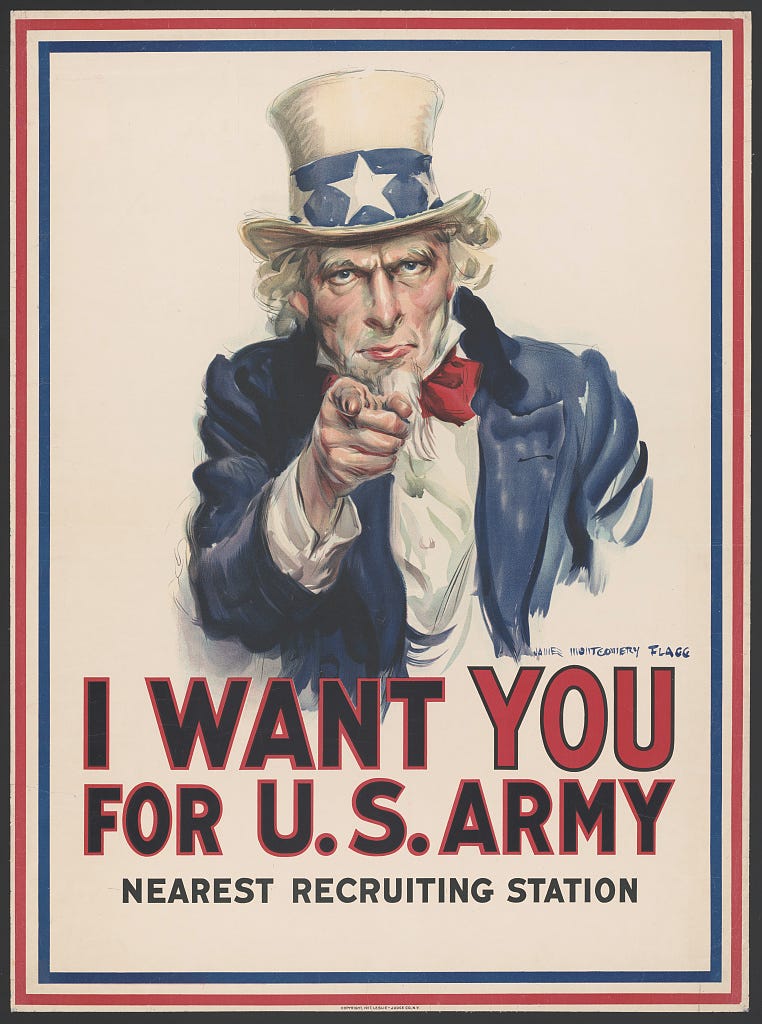When I was young, I loved playing with small, plastic toy soldiers, a version of what today are often referred to as “Little Green Army Men”. I knew that my toys were called “doughboys” and that this had something to do with World War I, but my sense of the war’s significance was thin. Unlike World War II, the Civil War, and the American Revolution, all of which loomed large in what I knew of history, World War I seemed almost an afterthought. My experience, it turns out, was fairly representative of the American population writ large. A new National World War I Memorial hopes to help remedy this gap in our collective memory.
Unveiled this past Friday, September 13, “A Soldier’s Journey” is a 58-foot-long bronze sculpture that completes the new National World War I Memorial. The memorial is located in Pershing Park, a stretch of land along Pennsylvania Ave. between 14th and 15th st. NW, near the U.S. Treasury building. The park is named for General John J. Pershing, who commanded the American Expeditionary Force in World War I.
A Soldier’s Journey was created by Sabin Howard. It features 38 figures chronicling, when viewed left to right, an individual soldier—a doughboy—as he departs home for the war and then ultimately comes back. As Michael Auslin in the Wall Street Journal put it, “It is a heroic monument in what many would consider an unheroic age.”
Source: The Doughboy Foundation
Close to 5 million Americans served in World War I. Over 2 million deployed to combat zones and over 300,000 were wounded or killed. And over 24 million Americans registered for the draft that was put into place for the war. As the numbers attest, the war’s impact on American society, to say nothing of its decisive effects on geopolitics and the global economy, was massive.
The famous “I want you for U.S. Army” was developed to encourage Americans to serve in World War I. Source: Library of Congress.
It was the formative military experience for many of the leaders who would command in World War II: George Marshall, Douglas MacArthur, and Harry Truman, among many others, served in World War I. It catalyzed greater integration across religious faiths in the Army and in the country more generally. And the service of millions of women in the war, whether in the Army, Red Cross, and throughout the defense industrial and economic base, helped lead to the passage of the 19th amendment to the Constitution, which guarantees women the right to vote.
Over 380,000 Black Americans served in World War I, often enduring brutal discrimination and abuse in order to fight for their country. Tragically, America in the aftermath of World War I experienced a revival in the Ku Klux Klan and other hate groups, leading to a surge in violent attacks against Black Americans and the hardening of Jim Crow laws. Yet Black veterans of the war, such as Army veteran Charles Hamilton Houston went on to play leading roles in the Civil Rights movement of the 1940s, 50s and 60s.
World War I also shaped American culture for generations. This was true with literature, as exemplified by writers such as Ernest Hemingway, Nellie Bly, and Edith Wharton, who reported on or served in the war. It was also true with music as the war helped start the Jazz Age, not only the in the US but around the world.
In an article about the artistic process behind A Soldier’s Journey, Sabin Howard refers to two questions that guided his design: “How can I tell a story that everyone will understand clearly. How can I tell a story that has universal meaning.” These questions are also ones central to the Army’s 250th anniversary—how can we lift up stories that all Americans can understand clearly and that have universal meaning for our society? A Soldier’s Journey and the World War I memorial are powerful examples of how national storytelling connects with us, both at the individual level and as members of a shared national story.
Additional Resources:
Learn more at the United States World War One Centennial Commission site.
Dedicate a Daily Taps to a veteran at doughboy.org.
Be Part of Army 250
If you’d like to write a newsletter post, share an educational resource about the Army, or lift up an opportunity for people to connect with the Army (e.g., an event, story, etc.), please contact Dan (dan@army250.us).





